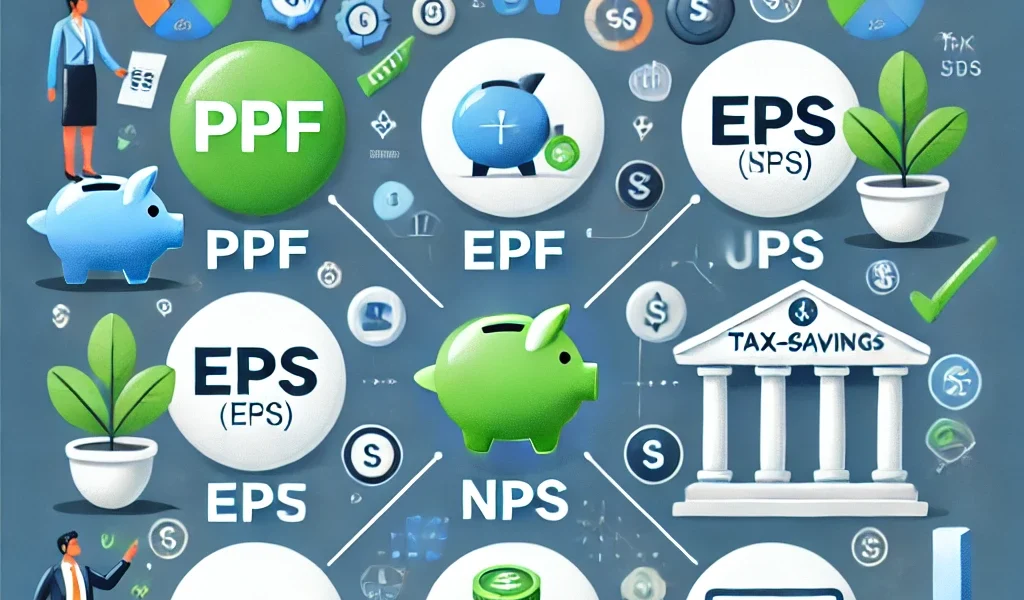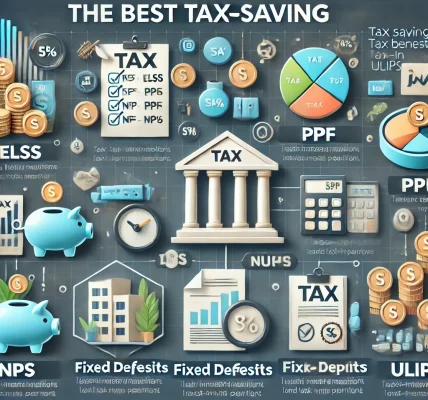Introduction
Paying taxes is essential, but wouldn’t it be great if you could save money while investing wisely? Tax-saving investment plans help you reduce your tax liability while ensuring financial growth. By strategically choosing tax-efficient investment options, you can maximize returns while benefiting from legal tax deductions.
In this guide, we’ll explore some of the best tax-saving investment plans, how they work, and how you can incorporate them into your financial strategy.
Why Should You Invest in Tax-Saving Plans?
- Reduce Tax Liability – Avail deductions under various tax laws to lower your taxable income.
- Wealth Creation – Invest in growth-oriented plans while enjoying tax benefits.
- Retirement Planning – Secure your post-retirement life while saving on taxes.
- Financial Security – Build an emergency corpus with tax-saving instruments.
- Government Incentives – Many tax-saving schemes are backed by the government.
Best Tax-Saving Investment Plans
1. Tax-Exempt Savings Plans Under Section 80C
The Indian Income Tax Act’s Section 80C offers a deduction of up to ₹1.5 lakh on eligible investments. Some of the best tax-saving investment options under this section include:
a) Public Provident Fund (PPF)
✅ Government-backed with a 15-year lock-in period. ✅ Tax-free interest and exempt-exempt-exempt (EEE) status. ✅ Suitable for long-term wealth creation.
b) Employee Provident Fund (EPF)
✅ Employer-employee contribution scheme. ✅ Tax-free maturity amount if withdrawn after 5 years. ✅ Ideal for salaried professionals.
c) Equity-Linked Savings Scheme (ELSS)
✅ Short 3-year lock-in with high return potential. ✅ Investment in equity funds. ✅ One of the best tax-saving mutual funds.
d) National Savings Certificate (NSC)
✅ Fixed-income investment with 5-year maturity. ✅ Interest is taxable but can be reinvested for tax benefits. ✅ Low-risk investment option.
e) Sukanya Samriddhi Yojana (SSY)
✅ Special scheme for a girl child. ✅ High-interest rate with tax-free returns. ✅ Government-backed and risk-free.
f) Tax-Saving Fixed Deposits (FDs)
✅ 5-year lock-in period. ✅ Taxable interest, but eligible for 80C deduction. ✅ Safer than market-linked options.
2. National Pension System (NPS) – Section 80CCD(1B)
✅ Additional deduction of ₹50,000 beyond 80C limit. ✅ Market-linked returns for better retirement planning. ✅ Partial tax exemption on withdrawals. ✅ Suitable for individuals seeking long-term retirement benefits.
3. Unit Linked Insurance Plan (ULIP)
✅ Investment + life insurance coverage. ✅ Tax-free maturity proceeds under Section 10(10D). ✅ Ideal for long-term financial goals.
4. Tax-Free Bonds
✅ Government-backed securities with fixed interest. ✅ Interest is tax-free, but principal does not qualify for deduction. ✅ Suitable for risk-averse investors.
5. Health Insurance Plans – Section 80D
✅ Deduction of up to ₹25,000 (₹50,000 for senior citizens) on health insurance premiums. ✅ Includes family and dependent parents. ✅ Helps manage medical expenses efficiently.
6. Home Loan Tax Benefits – Sections 80C, 24(b), and 80EE
✅ Principal repayment deduction under 80C. ✅ Interest deduction up to ₹2 lakh under Section 24(b). ✅ First-time homebuyers can claim an additional ₹50,000 deduction under 80EE. ✅ Promotes wealth creation through real estate investment.
How to Choose the Right Tax-Saving Investment Plan?
1. Identify Your Financial Goals
- Are you looking for long-term wealth creation?
- Do you need a secure, fixed-income option?
- Is retirement planning a priority?
2. Analyze Risk Tolerance
- Low-risk investors: PPF, FDs, NSC, SCSS.
- Moderate-risk investors: NPS, ULIPs.
- High-risk investors: ELSS, Market-linked NPS.
3. Consider Lock-In Period
- Shortest lock-in: ELSS (3 years).
- Mid-range lock-in: NSC, NPS (5+ years).
- Longest lock-in: PPF, ULIP, SSY (10-15+ years).
4. Check Tax Implications
- Fully tax-free options: PPF, SSY, EPF.
- Taxable on maturity: FDs, NSC, tax-free bonds.
- Partial tax benefits: NPS, ULIP.
Common Mistakes to Avoid in Tax-Saving Investments
❌ Investing Without a Goal – Don’t invest just to save tax. Consider future financial needs. ❌ Ignoring Liquidity Needs – Long lock-in periods can restrict withdrawals. ❌ Not Reviewing Investments Regularly – Keep track of changing tax laws and market trends. ❌ Investing in Only One Category – Diversification reduces risks. ❌ Overlooking Taxable Returns – Some instruments have taxable interest earnings.
Example Tax-Saving Investment Strategy
| Age Group | Recommended Plans |
|---|---|
| 20s – 30s | ELSS, NPS, ULIP, PPF |
| 40s – 50s | NPS, EPF, Home Loan Tax Benefits |
| 60+ | SCSS, Tax-Free Bonds, Health Insurance |
Conclusion
Tax-saving investment plans offer a win-win strategy by reducing taxable income while promoting financial growth. By strategically selecting the right investments based on your financial goals and risk appetite, you can maximize savings and secure your future.
💡 Start planning today! The earlier you invest, the more you save on taxes and grow your wealth. 🚀




